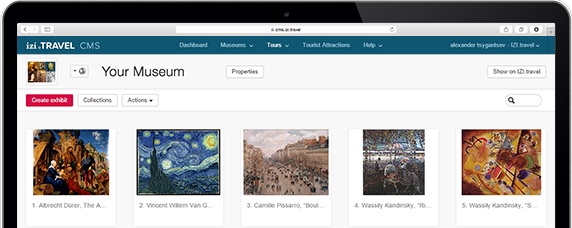Lapa Arches
Update Required To play the media you will need to either update your browser to a recent version or update your Flash plugin.
The construction of the Carioca Aqueduct, more commonly known as the Arcos da Lapa (Lapa Arches), was completed in 1723 and is considered the most important work of engineering in Rio de Janeiro during the colonial period. Its goal was to carry water from the Carioca River to Largo da Carioca (Carioca Square), thus solving the problem of a water shortage in the city. The water supplied the famous fountain located in Largo da Carioca (Carioca Square), where slaves collected water for their masters’ houses. It thus became a meeting place for slaves and merchants, and the center of urban life at that time.
The Arcos da Lapa (Lapa Arches) were initially constructed in wood, but since they were not very sturdy, Gomes Freire de Andrade received permission from King João V to rebuild the aqueduct with Brazilian stones. In 1774, the arches were repaired, employing Brazilian granite, with lime mortar, sand and fish oil. Construction was carried out by indigenous labor and completed with slave labor. The imposing structure was built in the Roman style, with 42 arches measuring 17.6m high and 270m long in total.
In 1896, the aqueduct was obsolete. There were then new repairs and an inspection was carried out to turn the aqueduct into a viaduct that would provide support for the rails of the city’s new tram system. The inspection test consisted in having a 10-ton car pass above the aqueduct and park at the point considered to be the weakest. The viaduct was able to pass the test and thus the Carioca tramline was created.
The Arcos (Arches) had further, comprehensive renovations in 2010. The renovation was part of various initiatives to recover, preserve, revitalize and bring order to the neighborhood of Lapa.
On weekends, Lapa is the meeting point of all social groups, who gather together under the Arcos (Arches) and in the bars around it, which are mostly in beautiful old mansions. In addition, Circo Voador (Flying Circus) and the Fundição Progresso (Progress Foundry), located in front of the Arcos (Arches), usually attract crowds to the neighborhood of Lapa for their events. Very important Brazilian artists have already played there, such as Chico Buarque and Lenine, among others.
From the Arcos da Lapa (Lapa Arches), you will already see our next stop, the Catedral de São Sebastião (São Sebastião Cathedral). Continue straight on Av. República do Paraguai, and turn left on Av. República do Chile.
The Arcos da Lapa (Lapa Arches) were initially constructed in wood, but since they were not very sturdy, Gomes Freire de Andrade received permission from King João V to rebuild the aqueduct with Brazilian stones. In 1774, the arches were repaired, employing Brazilian granite, with lime mortar, sand and fish oil. Construction was carried out by indigenous labor and completed with slave labor. The imposing structure was built in the Roman style, with 42 arches measuring 17.6m high and 270m long in total.
In 1896, the aqueduct was obsolete. There were then new repairs and an inspection was carried out to turn the aqueduct into a viaduct that would provide support for the rails of the city’s new tram system. The inspection test consisted in having a 10-ton car pass above the aqueduct and park at the point considered to be the weakest. The viaduct was able to pass the test and thus the Carioca tramline was created.
The Arcos (Arches) had further, comprehensive renovations in 2010. The renovation was part of various initiatives to recover, preserve, revitalize and bring order to the neighborhood of Lapa.
On weekends, Lapa is the meeting point of all social groups, who gather together under the Arcos (Arches) and in the bars around it, which are mostly in beautiful old mansions. In addition, Circo Voador (Flying Circus) and the Fundição Progresso (Progress Foundry), located in front of the Arcos (Arches), usually attract crowds to the neighborhood of Lapa for their events. Very important Brazilian artists have already played there, such as Chico Buarque and Lenine, among others.
From the Arcos da Lapa (Lapa Arches), you will already see our next stop, the Catedral de São Sebastião (São Sebastião Cathedral). Continue straight on Av. República do Paraguai, and turn left on Av. República do Chile.
Download the free izi.TRAVEL app
Create your own audio tours!
Use of the system and the mobile guide app is free

